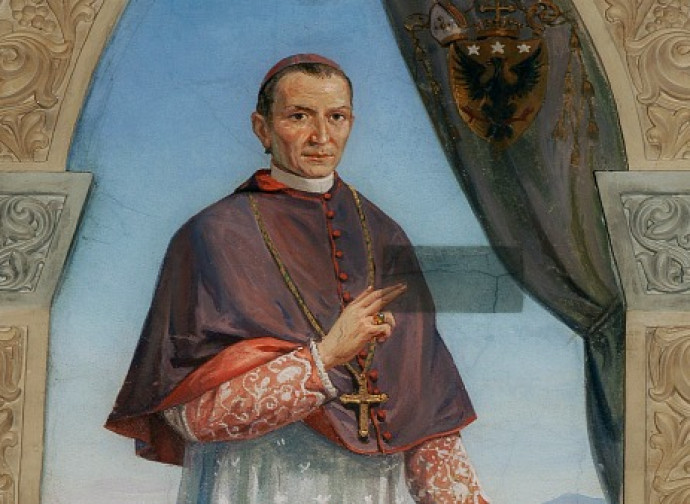Saint Anthony Maria Gianelli
Founder of the Daughters of Our Lady of the Garden, was an admirable example of a priest and bishop

He was born and grew up in an era of accelerated secularisation, between the French Revolution and the Risorgimento. St Anthony Maria Gianelli (1789-1846), founder of the Daughters of Our Lady of the Garden, was an admirable example of a priest and bishop who was passionate about charity for his neighbour and aware of the urgency of relaunching an adequate Christian education aimed at the salvation of souls.
His parents were humble Ligurian peasants with six children. It was thanks to the kindness of Nicoletta Assereto, owner of the land where the saint's father worked as a sharecropper, that the 18-year-old Antonio was able to go to study at the seminary in Genoa. The young man studied rhetoric, dogmatic and moral theology. On his own initiative, he also deepened his knowledge of the sacred liturgy. He devoted himself to preaching and teaching, even writing a book of etiquette for the seminarians.
His virtues did not go unnoticed. On 21 June 1826 the Archbishop of Genoa Luigi Lambruschini appointed him archpriest of the church of St John the Baptist, in Chiavari, and in a letter sent to the faithful he wrote: “I send you the most beautiful flower of my garden”. At the same time he elected him vicar of an area with 110 parishes, where Anthony could exercise all his apostolic zeal. He reformed the seminaries and founded numerous academies for the study of the Holy Scriptures. He favoured the study of St Thomas Aquinas for dogmatic theology and of St Alphonsus Maria de Liguori for morals. In 1827 he gathered around him young priests - placed under the protection of the great Neapolitan saint and therefore called Liguorians - and directed them to the rural missions, to increase the faith among countryside dwellers. Two years later the Daughters of Our Lady of the Garden, now commonly known as the Gianelline, were born. They dedicated themselves to the Christian education of abandoned girls and to caring for the sick.
He devoted himself to these works of charity, while leading a life of mortification and prayer. He wore the cilice, scourged himself often, adored the Blessed Sacrament and nurtured a filial love for the Blessed Virgin. His trust in Providence was contagious. On 25 August 1835, while cholera was raging in Liguria, Anthony led a penitential procession with the Black Christ, a medieval wooden crucifix, to ask God to spare Chiavari from the epidemic. Seven thousand faithful, singing sacred hymns and prayers, followed the priest to the sanctuary of the Madonna dell'Orto. And while the man of God preached in front of the sanctuary, a multitude of swallows began to circle around the Black Christ. The wooden crucifix remained exposed to the veneration of the faithful for eighty days, at the end of which the saint organised a second procession to thank the Lord for having preserved the city from contagion.
In 1838 he was appointed bishop of Bobbio, the seat of the famous abbey founded in 614 by the Irish Saint Columban, of whom Anthony wrote his Life. In this diocese he continued his work of reform, removing unworthy ecclesiastics and promoting the teaching of the Catechism. Among his pupils he also had the philosopher and priest Cristoforo Bonavino (1821-1895), who caused him great pain because of his renegation of Catholic doctrine: “If you continue in this way, you will only be able to cause the Church grave displeasure, and may God prevent you from becoming an apostate”, the saint admonished him. After Gianelli's death, Bonavino was suspended a divinis and joined the Freemasonry. The philosopher returned to the bosom of the Church six years before his death, thanking Our Lady for having saved him from eternal damnation and talking about his former master in this way: “His life can be said to have been a continuous and perpetual act of faith, hope and charity towards his neighbour. All his actions, like all his words, all his thoughts, like all his affections, had one and the same beginning, one and the same end: the glory of God and the salvation of souls”.




